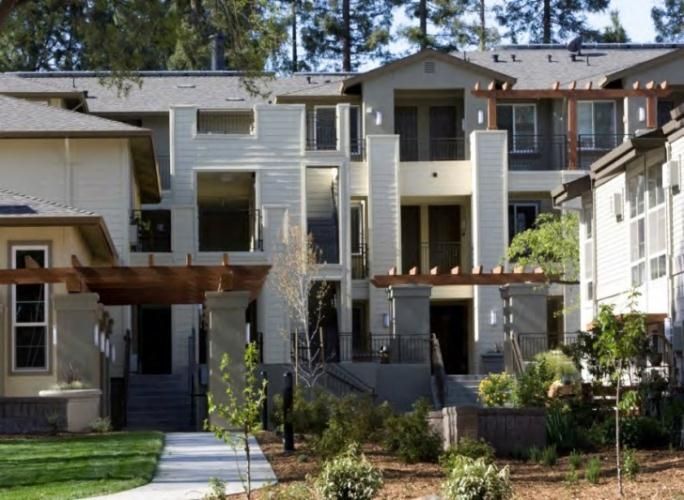
Public Land for Affordable Housing
At a Glance

Type: Development type
Where tool is used: Residential neighborhoods and downtowns/transit corridors
Timeline: Medium-term
Who implements: Jurisdictions
Relative density impact: High
As demand continues to exceed housing availability and funding sources for affordable housing, jurisdictions are increasingly interested in planning or regulatory tools that don’t require significant public investment from stretched public budgets. Using public land for affordable housing offers one such opportunity.
Public land refers to parcels owned or controlled by a jurisdiction. A jurisdiction’s surplus public land may include vacant, undeveloped, or underutilized parcels that are not used or needed by the jurisdiction. Existing public facilities, like schools, libraries, police or fire stations, or community centers may be located on public surplus lands, and redevelopment and upgrading of public facilities presents an opportunity to incorporate affordable housing. Jurisdictions can utilize their surplus public land available for housing in a variety of ways, including developing vacant sites, developing at higher density on existing sites, co-locating housing with existing uses, or disposing of or selling the land to developers who will build affordable or mixed-income housing.
California law requires local agencies disposing of surplus public land to give first priority to affordable housing, and allows local agencies to write down the cost of the land to provide additional subsidy for affordable housing purposes.1 AB 2135, signed into law in 2014, requires entities using the preference to dedicate at least a quarter of units in a development as affordable at 70% of Area Median Income or below.2
Public land can leverage other public investments. When provided at a discounted level for affordable housing, public land reduces development costs significantly; this, in turn, reduces the amount of public subsidy needed from other sources, or stretching those sources further to serve households at lower incomes than would otherwise be possible.3
Co-locating affordable housing with public facilities like schools or libraries can achieve maximum efficiency of land in high-cost areas, provide built-in users for public facilities, and contribute to the creation of walkable multi-use neighborhoods. One local example of the use of public land for affordable housing is the redevelopment of the Middlefield Junction area. San Mateo County and Redwood City are partnering on a master plan to redevelop the Fair Oaks Community Center, Fair Oaks Library, and adjacent properties with new facilities, affordable housing, and public space.4

Key Benefits
- Allows jurisdictions to use the land they control to address affordable housing needs without imposing additional taxes and fees on residents.
- Can provide affordable housing in locations near jobs and transit where available land is often scarce.
- Provides opportunities for co-location with community facilities, making more efficient use of potentially underutilized sites in valuable locations.

Community Considerations
- Public land should be prioritized for public benefit, such as affordable housing.
- A comprehensive inventory of a jurisdiction’s available land can strategically match resources to community needs.
- Jurisdictions should establish a transparent and systematic process for designating public parcels as surplus, establishing the value of parcels, and evaluating potential uses.

Community Engagement Strategies
- Inform your community: Provide notification to the public when surplus land becomes available for disposition.
- Educate your community: Create a transparent process for the valuation, disposition, and redevelopment of public land.
- Engage your community: Host meetings and develop an online forum for public land redevelopment to gather public input on community needs, potential uses, and proposed redevelopment plans.

Resources
- Tool: Public Land for Affordable Housing, Housing Innovations Program, Puget Sound Regional Council
- Policy: Make Publicly-Owned Land Available for Affordable Homes, Policy Toolbox, HousingPolicy.org
- Surplus Land – AB 2135 Fact Sheet, Non-Profit Housing Association of Northern California
1 AB 2135 Surplus land: affordable housing, California Legislative Information.
2 Surplus Land – AB 2135 Fact Sheet, Non-Profit Housing Association of Northern California.
3 Leveraging Public Land for Affordable Housing in Northern Virginia: A Primer, Northern Virginia Affordable Housing Alliance, 2014.
4 “County, city partner on Middlefield Junction: New vision for properties around Fair Oaks Community Center.” Daily Journal staff report. The Daily Journal. April 4, 2016.